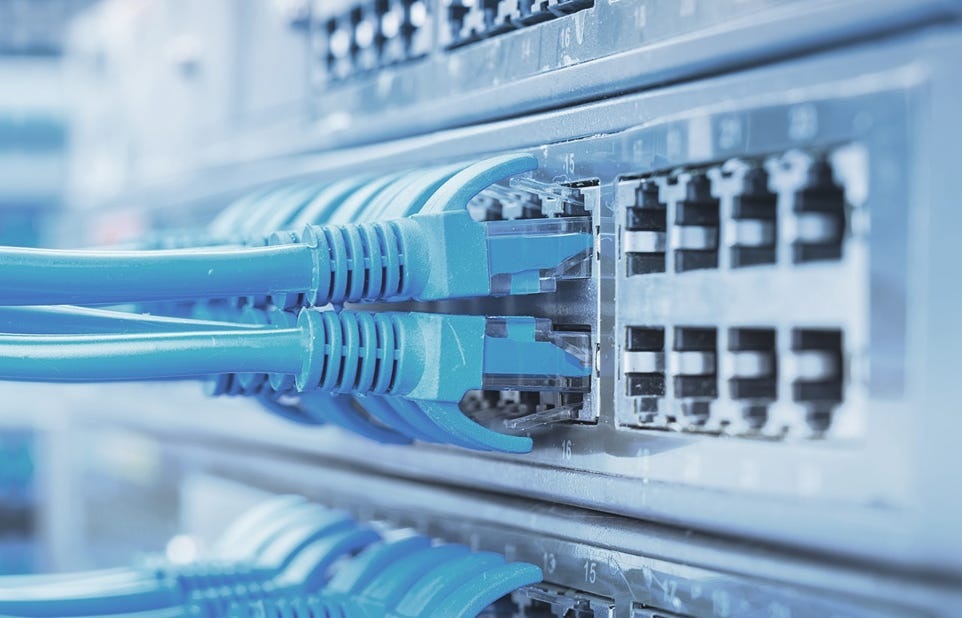
The Foundation of Connectivity: Exploring the Realm of Structured Cabling
In contemporary fast-changing environments, connectivity is a vital element because it enables communication, data transfer, and the efficiency of technologies. The spine of this connectivity is the structured cabling system that can be considered as its foundation, connecting all other elements. This paper focuses on the world of structured cabling, its essential modules, and how it influences what sort of connection & communication we require.
Structured cabling refers to an organized and unified installation of cable infrastructure designed to support ICS functions while providing a convenient medium for data transmission. This systemic sequence involves the application of distinctive elements such as cables, connectors, and hardware that act independently and unionized into a complete network for easy management.
The Basics of Structured Cabling
In the sophisticated web of contemporary interdependence, structured cabling is a silent backbone that keeps signals and data moving securely. As we focus on the core elements of structured cabling, we define the components and standards influencing its merit to transmit fast, reliable telecommunication systems.
Structured cabling is a comprehensive telecommunications infrastructure that connects cables and hardware. The key components include cables, connectors, distribution panels, and different types of connection hardware. The goal is to develop a unified channel that will address various communication needs.
The development of structured cabling standards has steadily increased as technology develops and becomes more intricate. The TIA and ISO are some organizations that developed and revised these standards. The evolution must be done to ensure that the cabling systems can communicate with new technologies and meet different communication demands.
Every network requires a properly developed cable structure for its operation. It not only increases the rate of data transfer but also reduces downtime and maintenance risks. Structured cabling provides scalability, thus making it easy to facilitate new technologies and expansions.
Types of Structured Cabling
Structured cabling is central to every modern communication network because it gives an organized and standardized method for connections. However the type of structured cabling, all involve an essential part in forming the efficiency and reliability of the networked world.
Fiber Optic Cabling
Many types of cables distribute structured cabling in Dallas, for instance, which is a center for innovation technology. Fiber optic cabling is a prominent player in this field; it provides a quick data transmission rate close to zero signal loss. The two major groups include single-mode and multi-mode fiber that serve specific bandwidth despite the distance.
Copper Cabling
The types that include copper cables include UTP and SPT.
- Unshielded Twisted Pair: The data networking and telecommunication utilize unshielded twisted pair cables. These two twin cables consist of identical and copper-insulated twisted-together wires that serve as a low-cost transition pathway between various utilization zones to the power source.
- Shielded Twisted Pair (STP): The STP cables have another shield that prevents electromagnetic wave interference. This high level of protection makes them ideal for environments with extreme electrical noise, increasing signal quality and reliability.
Coaxial Cabling
Cable television and broadband internet connections often rely on coaxial cables. They are made of a central conductor, an insulating substance, a metallic shield, and an outer insulation layer. Coaxial cabling ensures sound transmission over a longer distance, and interference is resistant.
Designing a Structured Cabling System
The creation of a planned cabling system is an important task that lies at the core of modern communication networks. With the development of technology, organizations should build a strong platform that will not only cover current demands but also predict future ones. This initial discussion delves into the critical aspects and significance of implementing a properly designed structured cabling system for perfect network functionality, as well as its scalability.
A key component in the construction of a structured cabling system design is future-proofing cables. This entails forecasting future advances in technology and making sure that the cabling infrastructure can support new technologies without heavy rewiring.
Installation and Maintenance
The structured cabling installation and maintenance ensure a sturdy network foundation. Professional installation and routine servicing are vital in sustaining performance for long-term results of structured cabling systems. From installation accuracy to pre-emptive maintenance practices, these cornerstones are crucial for maintaining the link that powers our interdependent society.
- Professional Installation Guidelines: The installation of structured cabling requires precision and adherence to industry standards. Professional installers follow guidelines established by organizations like TIA and ISO to ensure that the cabling system is implemented correctly. This includes proper cable management, labeling, and documentation.
- Importance of Regular Maintenance: A structured cabling system needs regular maintenance for longevity and functionality. This encompasses inspections, testing, and any necessary rectifications in a short time. Maintenance practices allow the problems to be identified before they get really bad and bring down network reliability.
- Troubleshooting Common Issues: Issues with structured wiring systems can include signal deterioration, connection problems, and interference. Troubleshooting refers to systematic diagnostics and correction of these issues. Effective troubleshooting is also made possible by proper cabling system documentation since it provides information regarding a network layout.
The Impact of Structured Cabling on Connectivity
Amidst the vastness of contemporary technologies, structured cabling has a powerful effect on connectivity. As the foundation of our networked world, structured cabling not only improves efficiency but also supports new technologies such as 5G and IoT. Structured cabling has an essential role in achieving scalability, flexibility, and efficiency of connectivity within our digital reality.
- Enhanced Network Performance: Systematic cabling is essential to increase network efficiency and provide standard and organized infrastructure. This leads to faster data transfer speeds, less latency, and higher network efficiency overall.
- Support for Emerging Technologies (5G, IoT, etc.): With the development of technology, structured cabling serves as a vital feature to assist new technologies like 5G and IoT. Structured cabling systems can integrate and adapt to the needs of this emerging technology, thanks in part to their scalability.
- Scalability and Flexibility: Scalability and flexibility are among the main benefits of structured cabling. Businesses can also easily scale their network infrastructure to cater to increased demands without much need for redesign. This flexibility guarantees organizational responsiveness to changing technology and business needs.
Wrapping Up
Empower your business with innovative cabling and phone systems that enhance agility and efficiency. Choose JabberComm – a woman-owned HUB established in 1999 – for cutting-edge connectivity solutions and telecom expertise. With a nationwide reach, JabberComm supports your growth wherever your business ventures.
Partner with telecom professionals who never stop learning – choose JabberComm for a future-proofed, robust network. Contact them today to transform your data and communication infrastructure.

